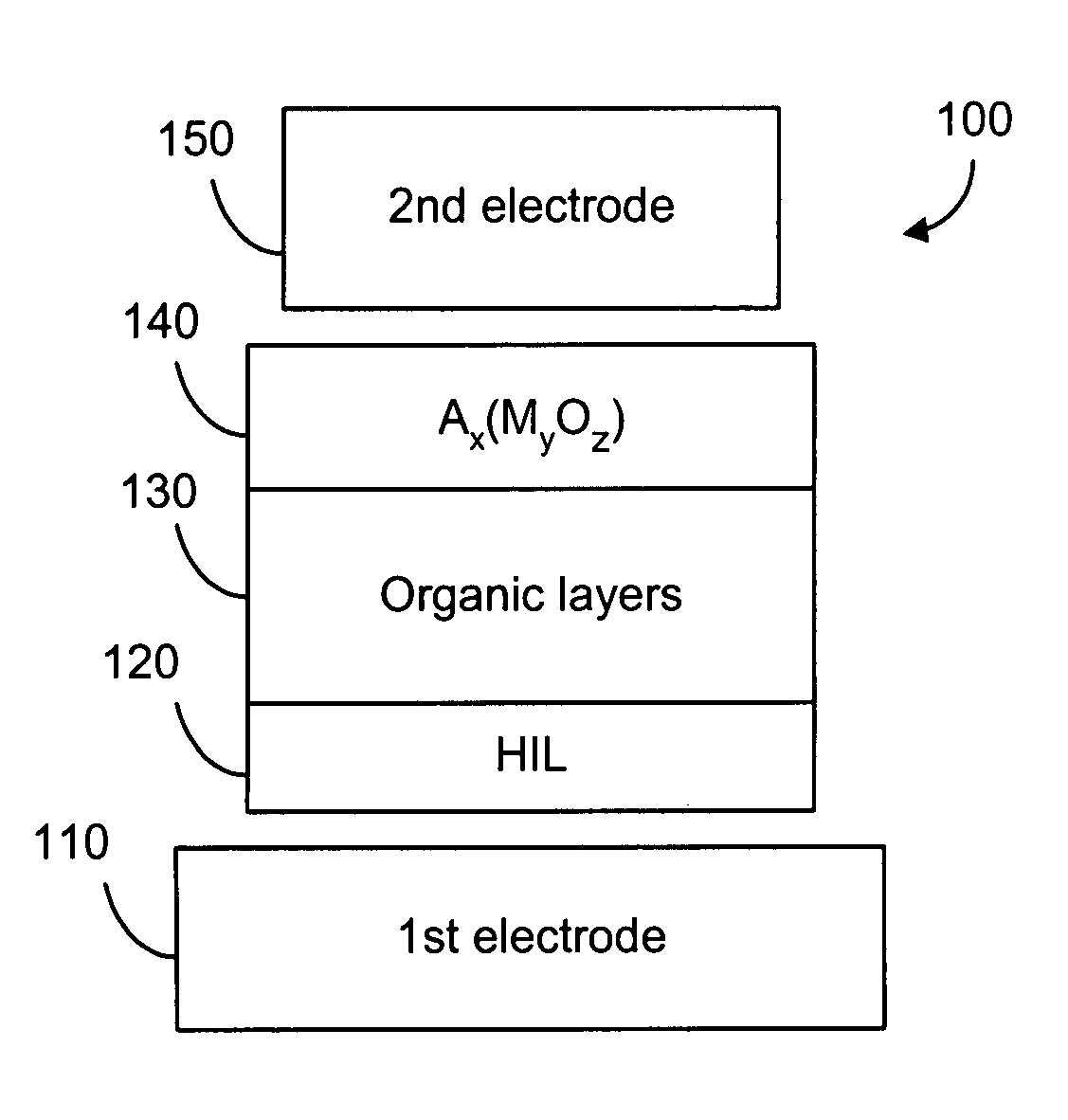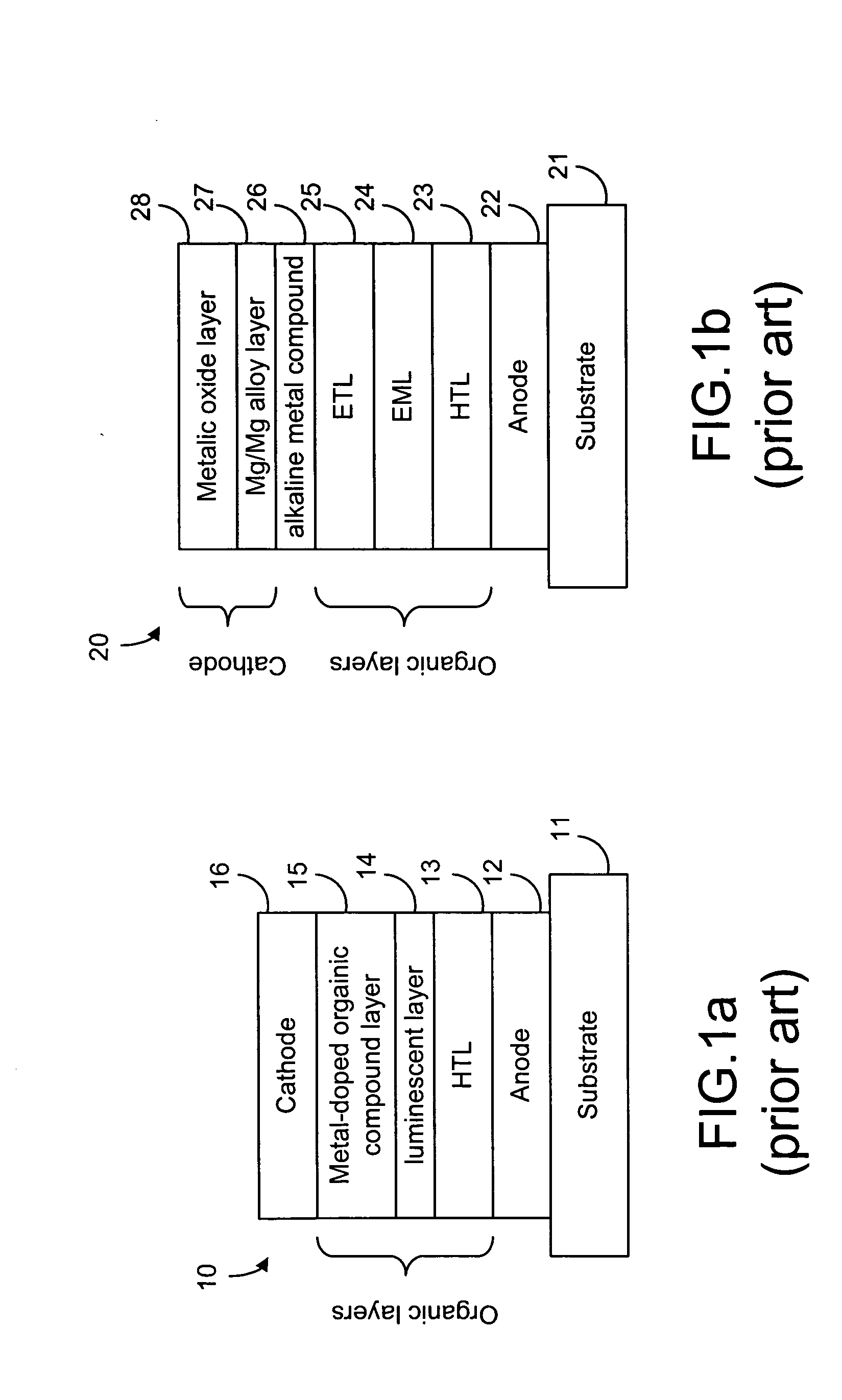Organic photoelectric device with improved electron transport efficiency
a photoelectric device and electron transport technology, applied in the field of photoelectric devices, can solve problems such as inability to use in thermal evaporation process, and achieve the effect of increasing the electron transportability
- Summary
- Abstract
- Description
- Claims
- Application Information
AI Technical Summary
Benefits of technology
Problems solved by technology
Method used
Image
Examples
Embodiment Construction
[0076]FIG. 3a is a schematic representation showing an embodiment of the present invention. As shown in FIG. 3a, an organic optoelectronic device 100 comprises a first electrode 110, a hole injection layer 120, a plurality of organic layers 130, a layer 140 of an oxide-based alkali or alkaline-earth metal intercalation compound and a second electrode 150. In general, the organic layers 130 comprise a hole transport layer, a luminescent layer and an electron transport layer, similar to the organic layers in prior art OLEDs as shown in FIGS. 1a to 1c. The organic layers 130 may comprise a fullerene layer and a phthalocyanine layer, similar to the organic layers in a prior art photocell, as shown in FIG. 2. In particular, the oxide-based alkali or alkaline-earth metal intercalation compound takes the form of a chemical formula Ax(MyOz), where x, y, z are positive integers greater than zero. The letter A represents an alkali or alkaline-earth element; M represents a metal, a transitiona...
PUM
 Login to View More
Login to View More Abstract
Description
Claims
Application Information
 Login to View More
Login to View More - R&D
- Intellectual Property
- Life Sciences
- Materials
- Tech Scout
- Unparalleled Data Quality
- Higher Quality Content
- 60% Fewer Hallucinations
Browse by: Latest US Patents, China's latest patents, Technical Efficacy Thesaurus, Application Domain, Technology Topic, Popular Technical Reports.
© 2025 PatSnap. All rights reserved.Legal|Privacy policy|Modern Slavery Act Transparency Statement|Sitemap|About US| Contact US: help@patsnap.com



